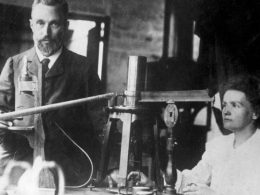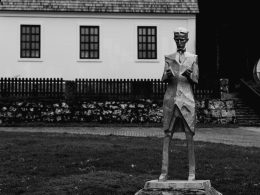Table of Contents Show
I. The Birth of a Genius: Childhood in an Unusual Household
In the grand halls of 19th-century England, where society was defined by rigid class structures and strict gender roles, Augusta Ada Byron was born into a world of contradiction and complexity. Born on December 10, 1815, she was the daughter of the notorious poet Lord Byron and the mathematician Annabella Milbanke, a union that was as ill-fated as it was brief. Lord Byron, known for his tumultuous life and romantic verse, abandoned his family when Ada was just a month old, leaving behind a legacy that would haunt his daughter throughout her life.
Ada’s mother, determined to shield her from the perceived madness of her father, sought to cultivate in her daughter a mind grounded in reason and logic. Annabella, herself highly educated and known as the “Princess of Parallelograms” for her mathematical prowess, imposed a rigorous regimen of study on young Ada. Mathematics and science were to be her focus, not poetry or the arts, which Annabella feared would lead her daughter down the same destructive path as her father.
Yet, Ada was more than the sum of her parents’ ambitions. From an early age, she exhibited an insatiable curiosity and an extraordinary capacity for abstract thinking. Her upbringing, while strict and often isolating, provided her with a unique foundation—a mind trained in the exacting disciplines of mathematics and logic, but one that also retained a spark of creativity and imagination, perhaps an inheritance from her absent father.
This duality would come to define Ada’s intellectual pursuits. While she excelled in the mathematical disciplines her mother prized, she also harbored a deep fascination with the mysteries of the natural world, with machines, and with the potential for human ingenuity to transcend the limitations of the present. These early years were formative, laying the groundwork for her later work, which would challenge the very boundaries of what was thought possible.
II. The Introduction to a Visionary: Meeting Charles Babbage
In 1833, at the age of 17, Ada Lovelace’s life took a decisive turn when she was introduced to Charles Babbage, a brilliant mathematician and inventor, who would become both her mentor and collaborator. Babbage, a man whose intellect matched his eccentricity, was in the midst of developing what he called the “Difference Engine,” a mechanical device designed to perform mathematical calculations. But it was his later invention, the “Analytical Engine,” that would capture Ada’s imagination and secure her place in history.
The Analytical Engine was a machine unlike anything the world had seen—an early conceptual precursor to the modern computer, capable of performing not just simple calculations, but of executing sequences of operations based on input and instructions. While Babbage had conceived the machine, it was Ada who would come to understand and articulate its true potential.
Their partnership was one of mutual respect and intellectual fervor. Babbage recognized in Ada a mind capable of grasping the abstract and theoretical concepts that underpinned his work, and he encouraged her to explore these ideas further. For Ada, Babbage’s machines represented more than just mechanical curiosities; they were, in her words, “a new, vast, and powerful language.” She saw in them the potential to revolutionize the way humans interacted with information, to create what she described as “a calculus of the nervous system.”
It was through her collaboration with Babbage that Ada’s unique genius began to fully emerge. She combined her mathematical training with a visionary insight that allowed her to see beyond the immediate functionality of the machine to its broader implications. While Babbage was focused on the engineering challenges of building the Analytical Engine, Ada was already contemplating the kinds of problems it could solve, the types of tasks it could perform, and the ways in which it could be programmed to operate independently of human intervention.
III. The Birth of the Algorithm: Writing the First Computer Program
In 1842, an opportunity arose for Ada to contribute to the development of the Analytical Engine in a way that would immortalize her name. At Babbage’s request, she translated an article by the Italian mathematician Luigi Menabrea, who had written about the Analytical Engine. But Ada did not merely translate the work—she expanded upon it, adding her own extensive notes that were three times longer than the original article.
These notes, published under the initials “A.A.L.” to disguise her gender, contained what is now recognized as the first computer algorithm—an intricate sequence of instructions designed to be processed by the Analytical Engine to calculate Bernoulli numbers. This was not just a mathematical exercise; it was the first time that a set of operations had been designed to be carried out by a machine, laying the foundation for modern computer programming.
Ada’s notes went far beyond the technical details of the algorithm. She mused on the broader implications of the Analytical Engine, predicting that it could be used to compose music, produce graphics, and even assist with complex scientific calculations. She understood that the machine’s potential extended beyond mere number-crunching; it could be a tool for creativity, capable of manipulating symbols in ways that mirrored the processes of human thought.
This was Ada Lovelace’s great insight—her recognition that the Analytical Engine was not just a mechanical calculator, but a machine capable of executing a sequence of instructions to achieve a wide range of tasks. In this, she was far ahead of her time, envisioning a future where machines would be able to perform complex operations autonomously, a concept that would not be fully realized until the development of the modern computer over a century later.
IV. The Challenges and Struggles: A Life Cut Short
Despite her extraordinary contributions, Ada Lovelace’s life was marked by struggle and tragedy. Her health, always fragile, began to deteriorate in her early thirties. She suffered from various ailments, and the medical treatments of the time, which included bloodletting and the use of opium, likely exacerbated her condition. Moreover, Ada was haunted by the legacy of her father, whose mental instability she feared she might inherit.
Her personal life was also tumultuous. Ada married William King-Noel, the Earl of Lovelace, in 1835, and they had three children together. But her marriage, while outwardly successful, was strained by Ada’s health issues and her intense focus on her intellectual pursuits. She found herself increasingly isolated, her brilliant mind constrained by the expectations of her role as a wife and mother in Victorian society.
In the final years of her life, Ada became involved in a series of ill-fated ventures, including an attempt to develop a mathematical model for betting on horse races, which left her financially and emotionally drained. Her relationship with Babbage also became strained, as their collaboration waned and the Analytical Engine remained unbuilt. Babbage, while a brilliant theorist, lacked the practical skills and the financial backing necessary to bring his designs to fruition, and Ada’s hopes of seeing her vision realized were never fulfilled.
Ada Lovelace died of uterine cancer on November 27, 1852, at the age of 36. She was buried beside her father, the poet she had never known, but whose influence had shaped her life in ways both profound and subtle. Her death marked the end of a life filled with promise and unfulfilled potential, a life that, despite its brevity, left an indelible mark on the history of science and technology.
V. The Legacy of a Pioneer: Impact and Recognition
Ada Lovelace’s contributions to the field of computing went largely unrecognized during her lifetime and for many decades after her death. It was only in the mid-20th century, as the first electronic computers were being developed, that her work began to receive the recognition it deserved. The rediscovery of her notes on the Analytical Engine, and the realization that she had written the first computer algorithm, led to a reevaluation of her place in history.
Today, Ada Lovelace is celebrated as one of the founding figures of computer science. The programming language “Ada,” developed by the U.S. Department of Defense in the 1980s, was named in her honor, a testament to the enduring impact of her work. Her life has inspired countless women in science and technology, serving as a reminder that the contributions of women have often been overlooked or marginalized in the history of science.
But Ada’s legacy is not confined to her technical achievements. She was a visionary who saw the potential of computing long before the technology to realize it existed. Her insights into the nature of machines, and their ability to process information in ways that mirrored human thought, laid the groundwork for the development of artificial intelligence and modern computing.
Ada Lovelace’s life was a paradox—a woman born into a society that restricted her opportunities, yet who managed to break through those barriers through sheer intellect and imagination. Her story is one of brilliance and tragedy, of a mind that saw the future while being constrained by the limitations of her time. In the end, Ada Lovelace was more than just a mathematician or a programmer; she was a pioneer, whose ideas continue to shape the world in ways she could scarcely have imagined.









